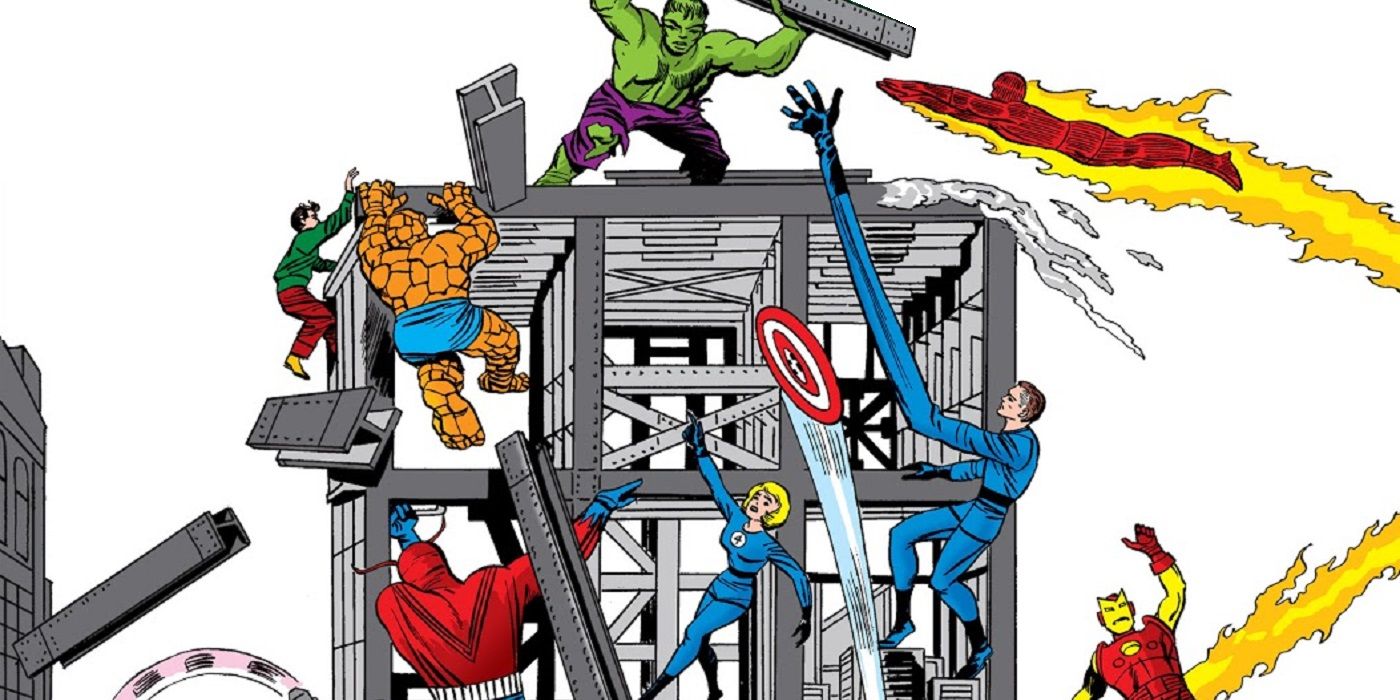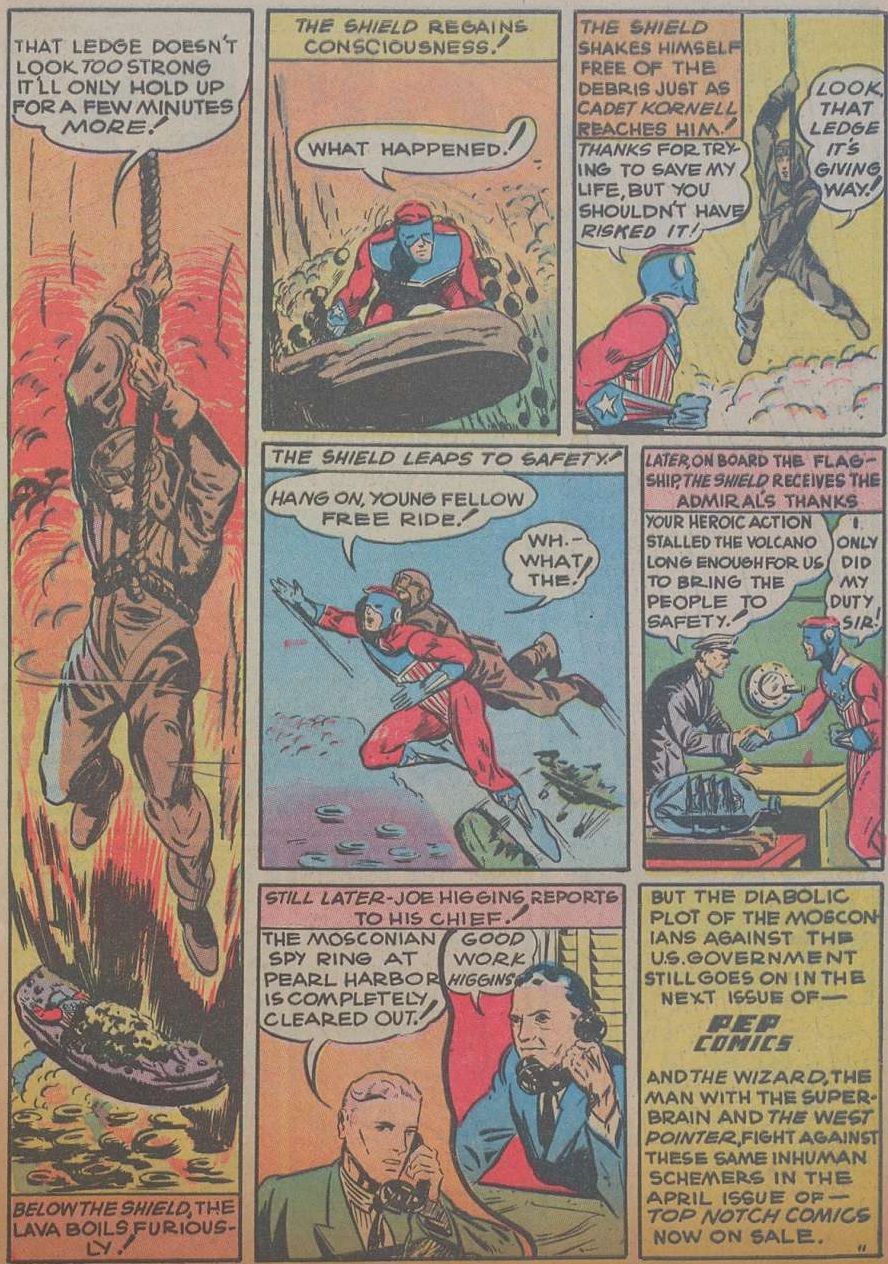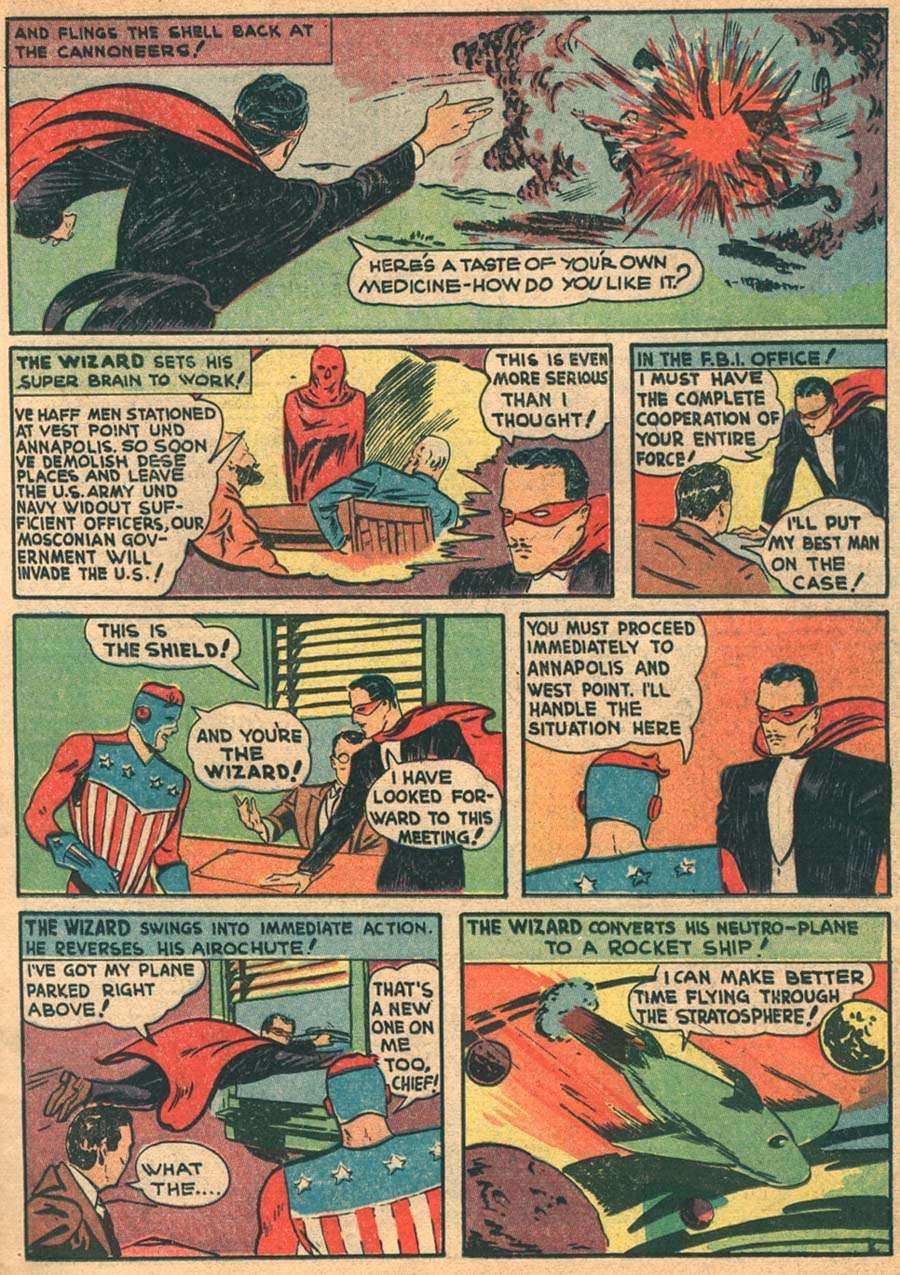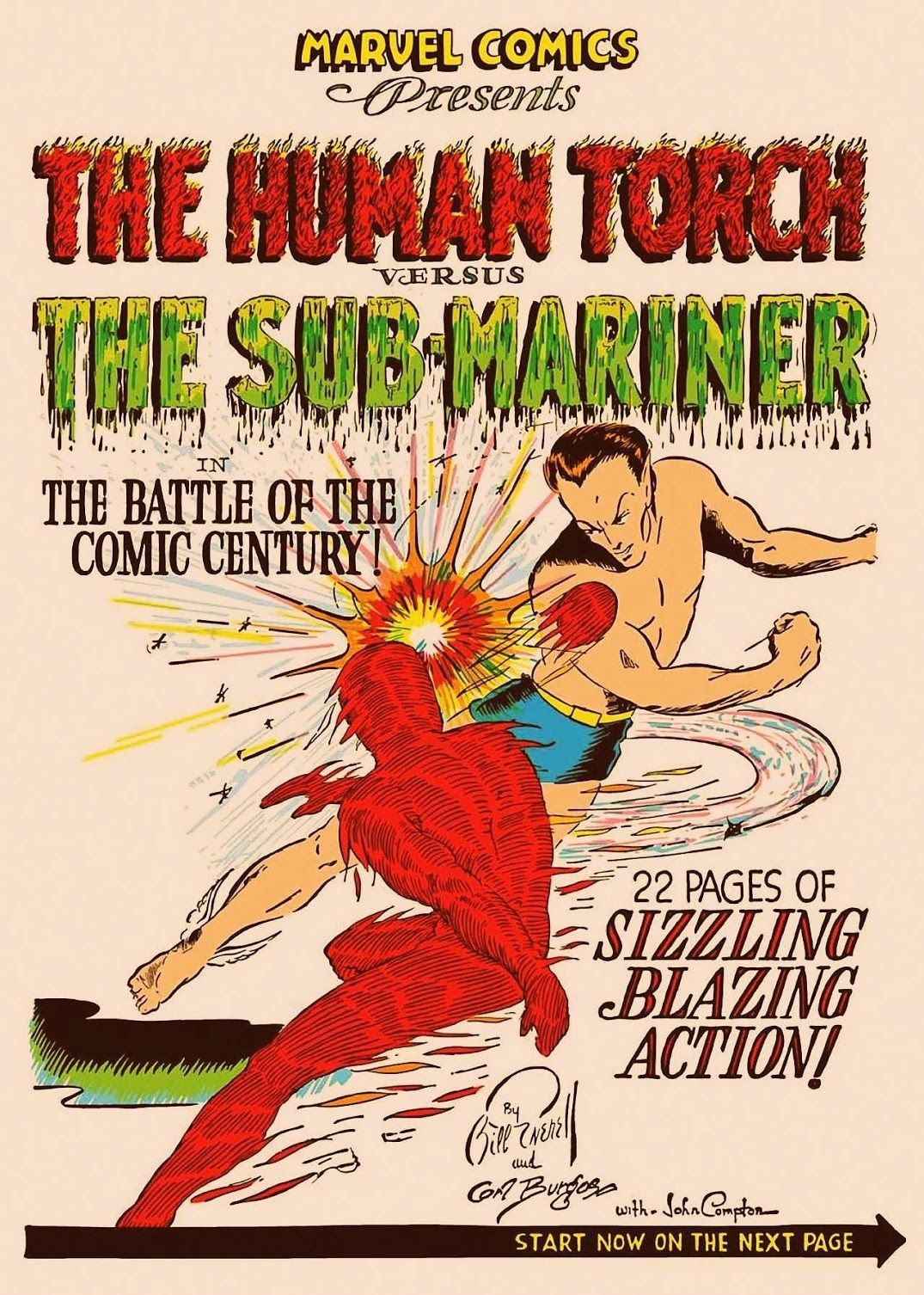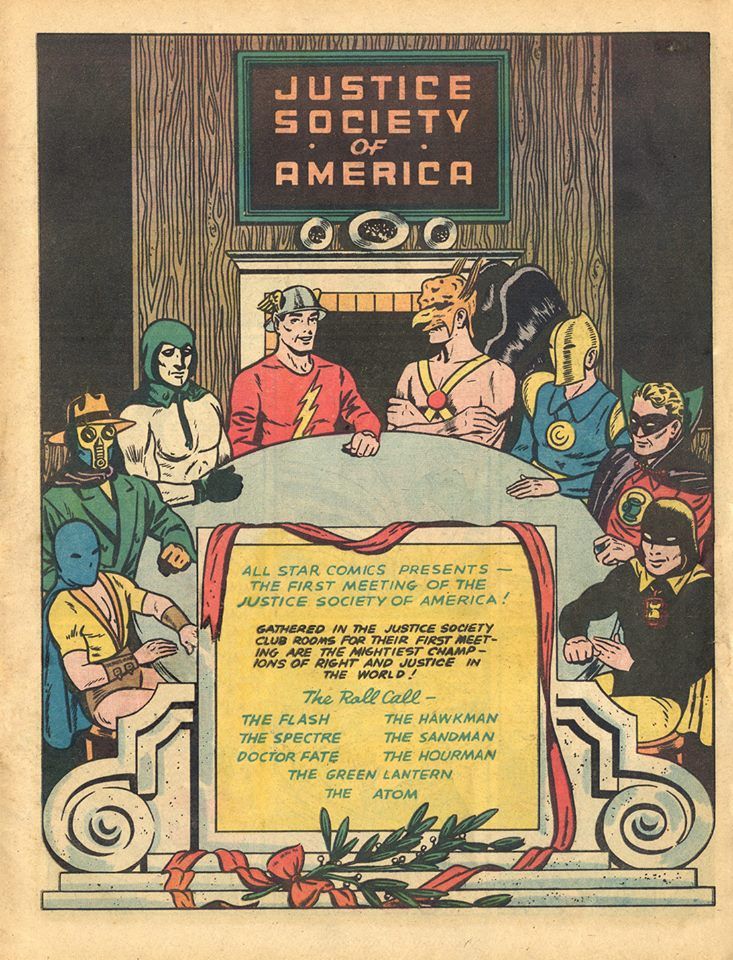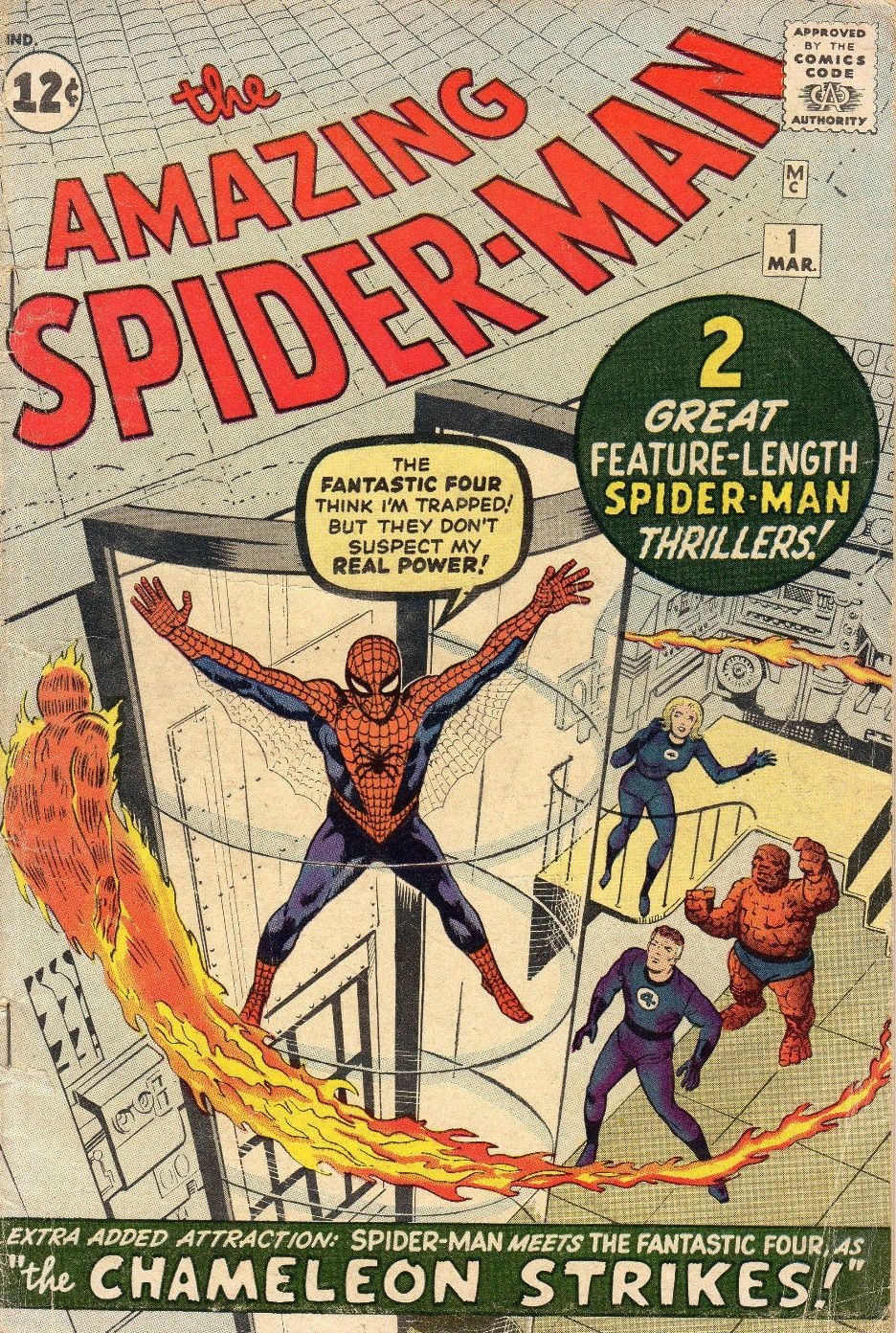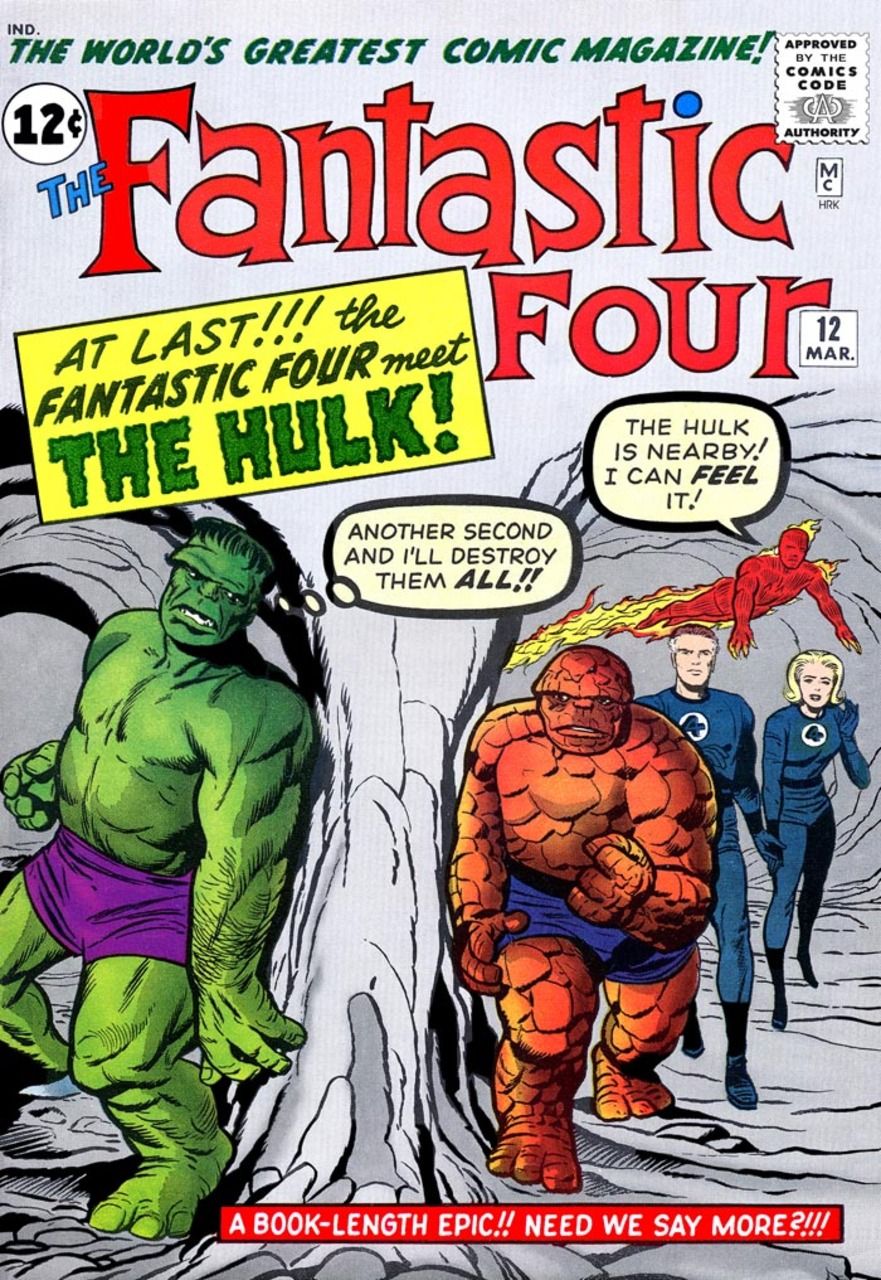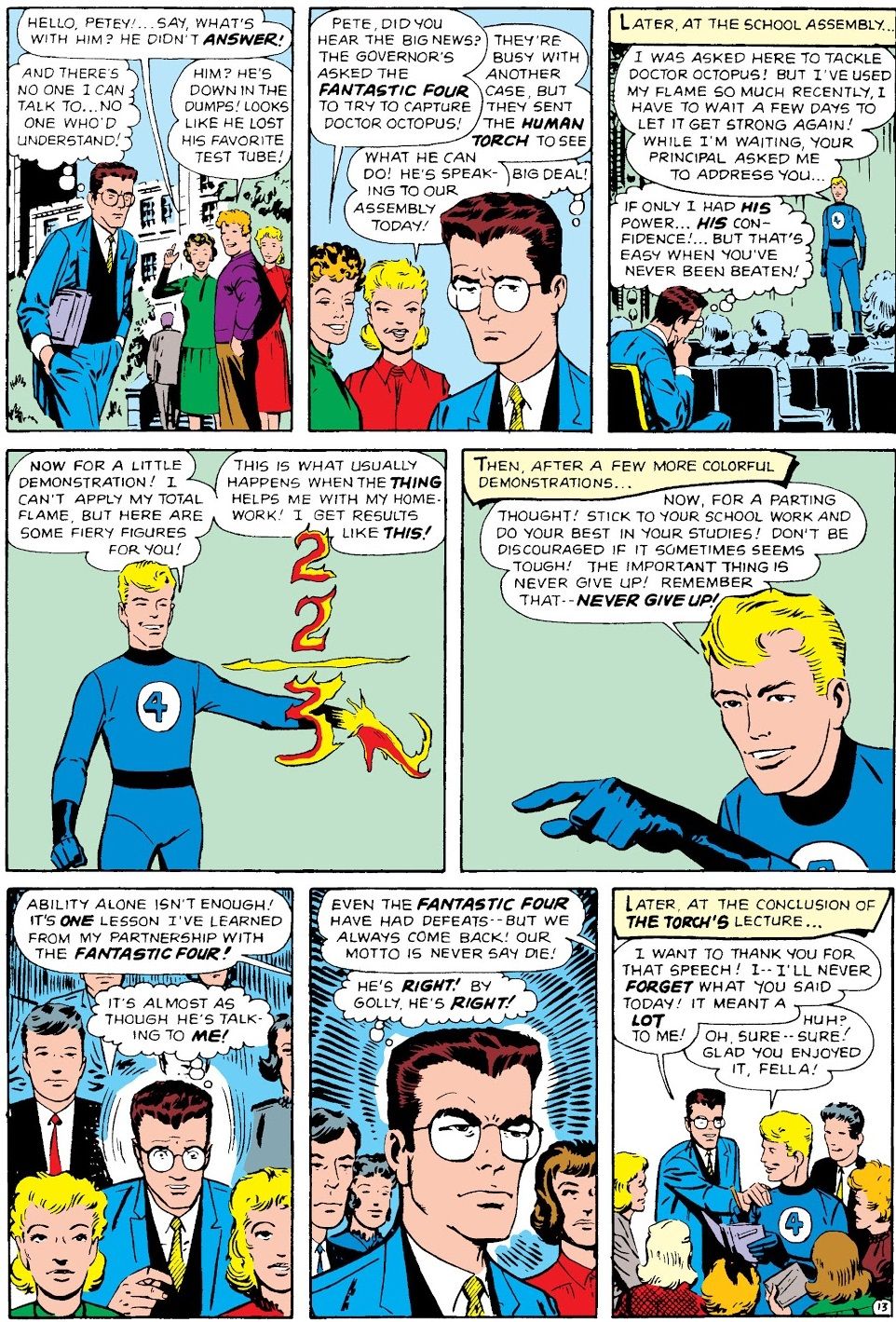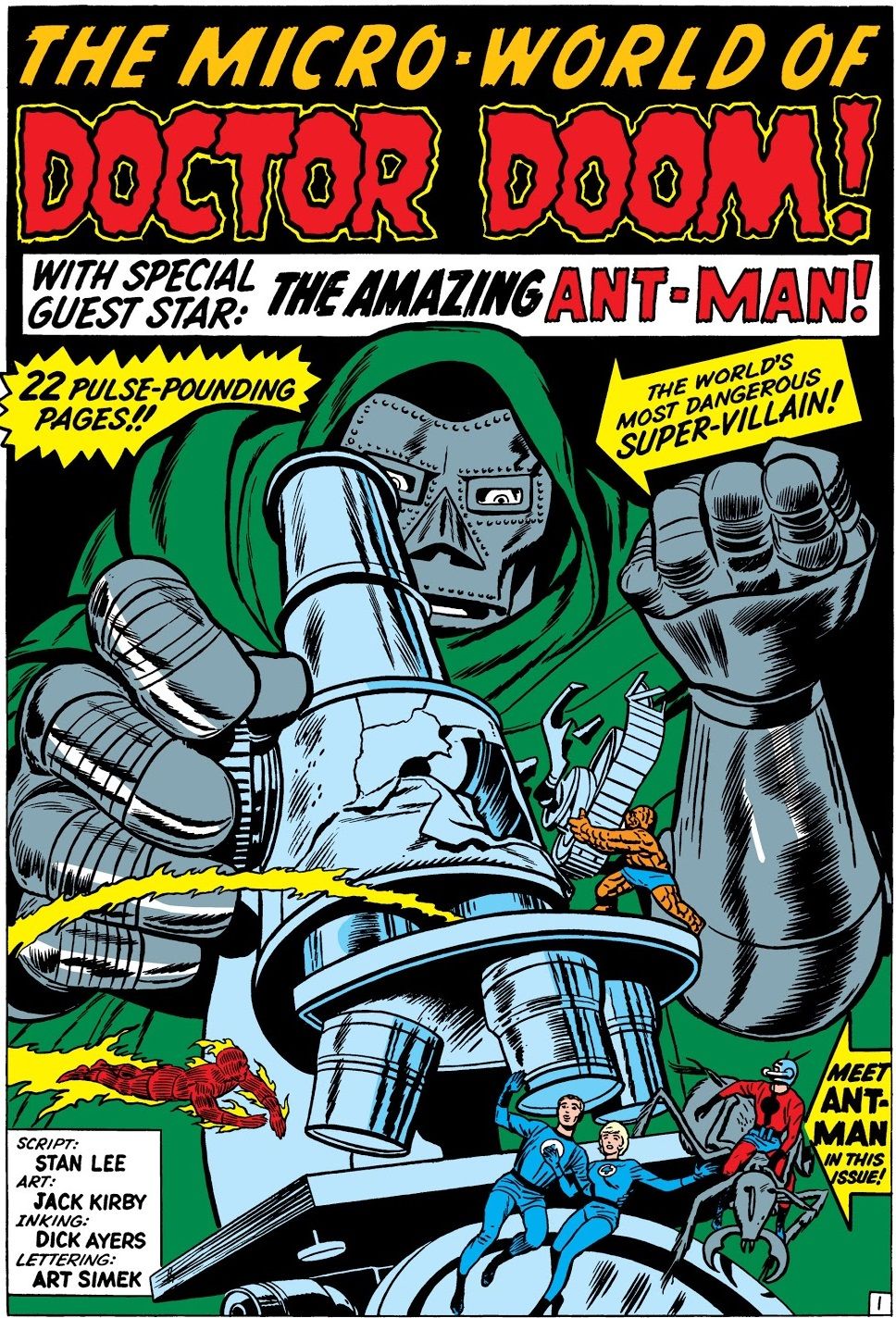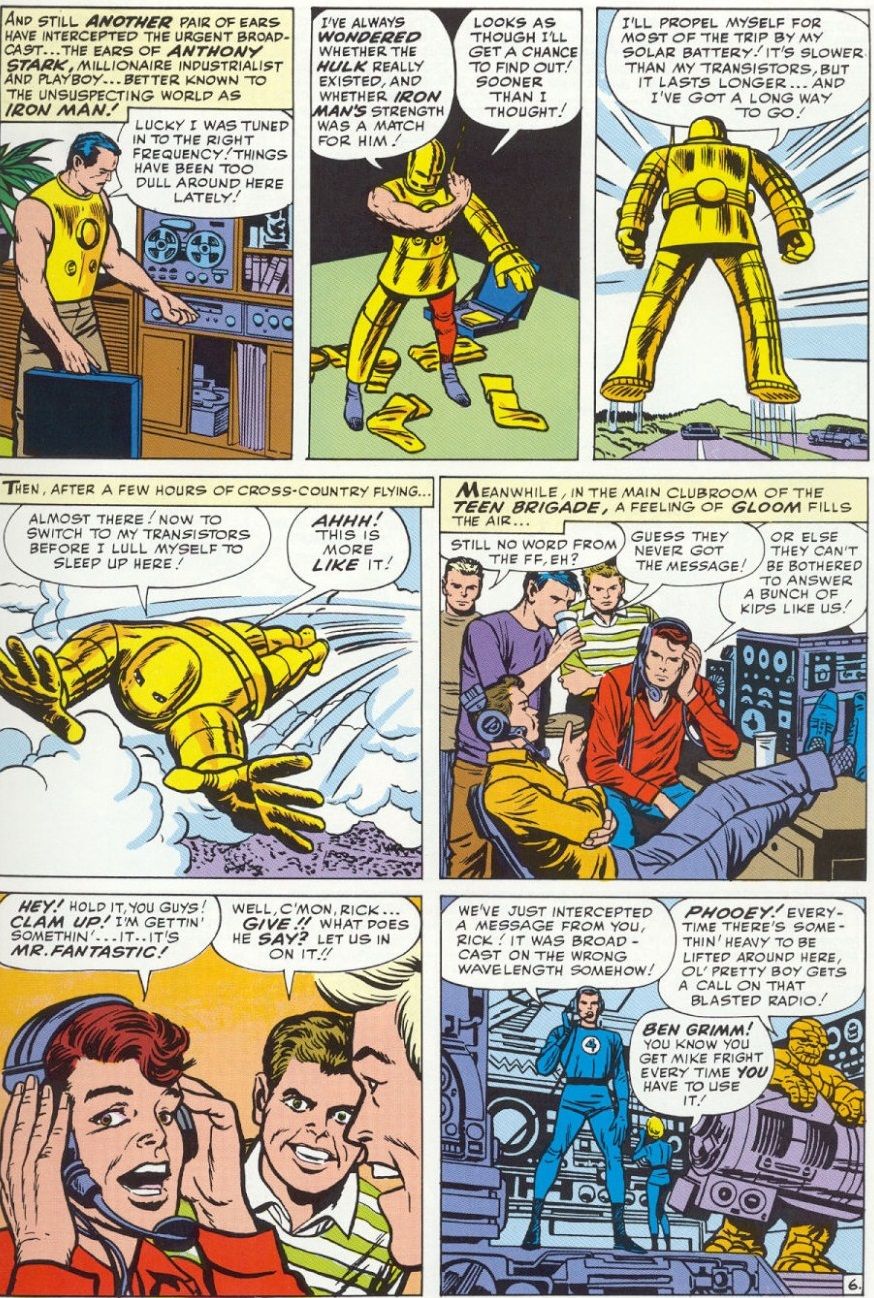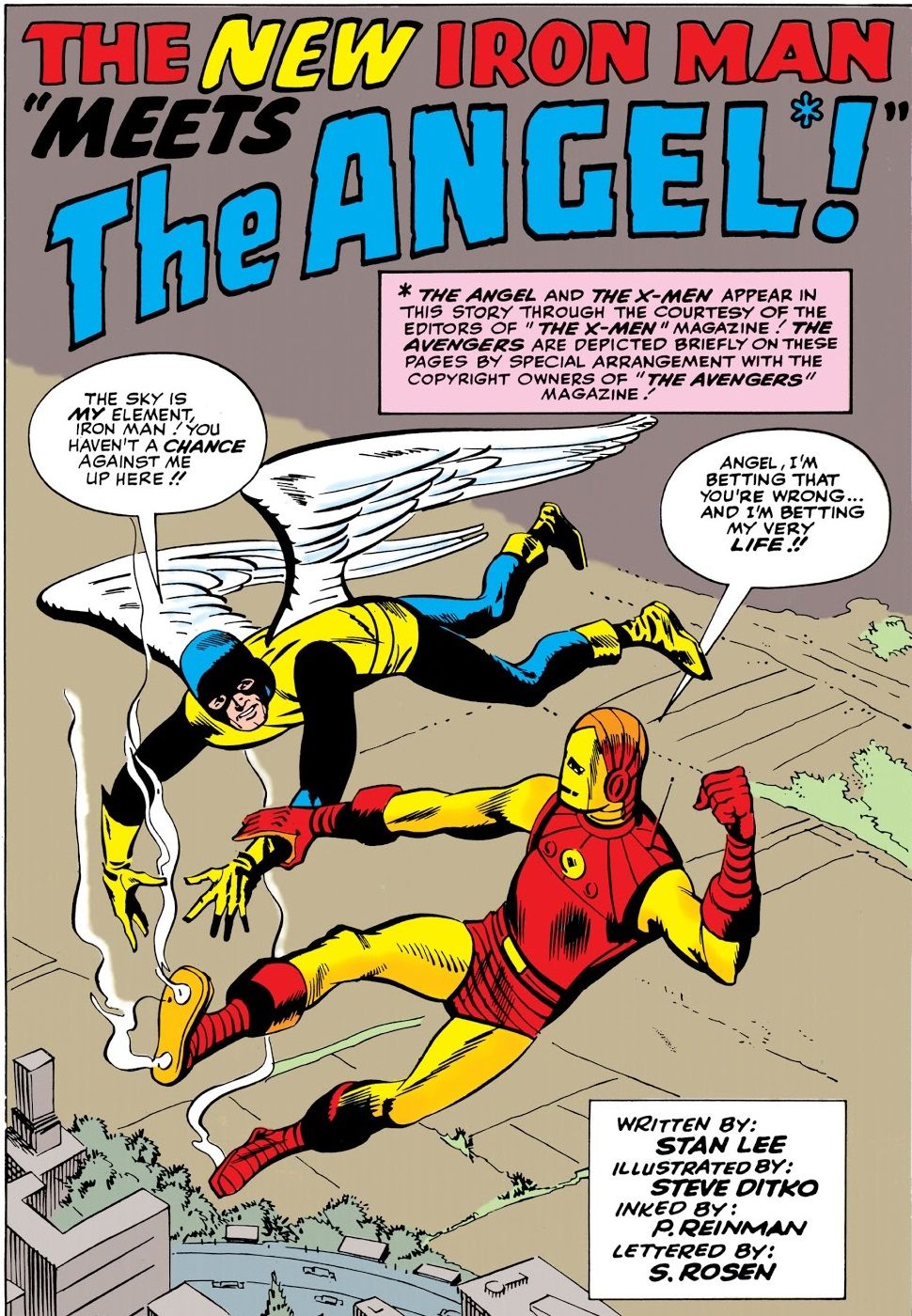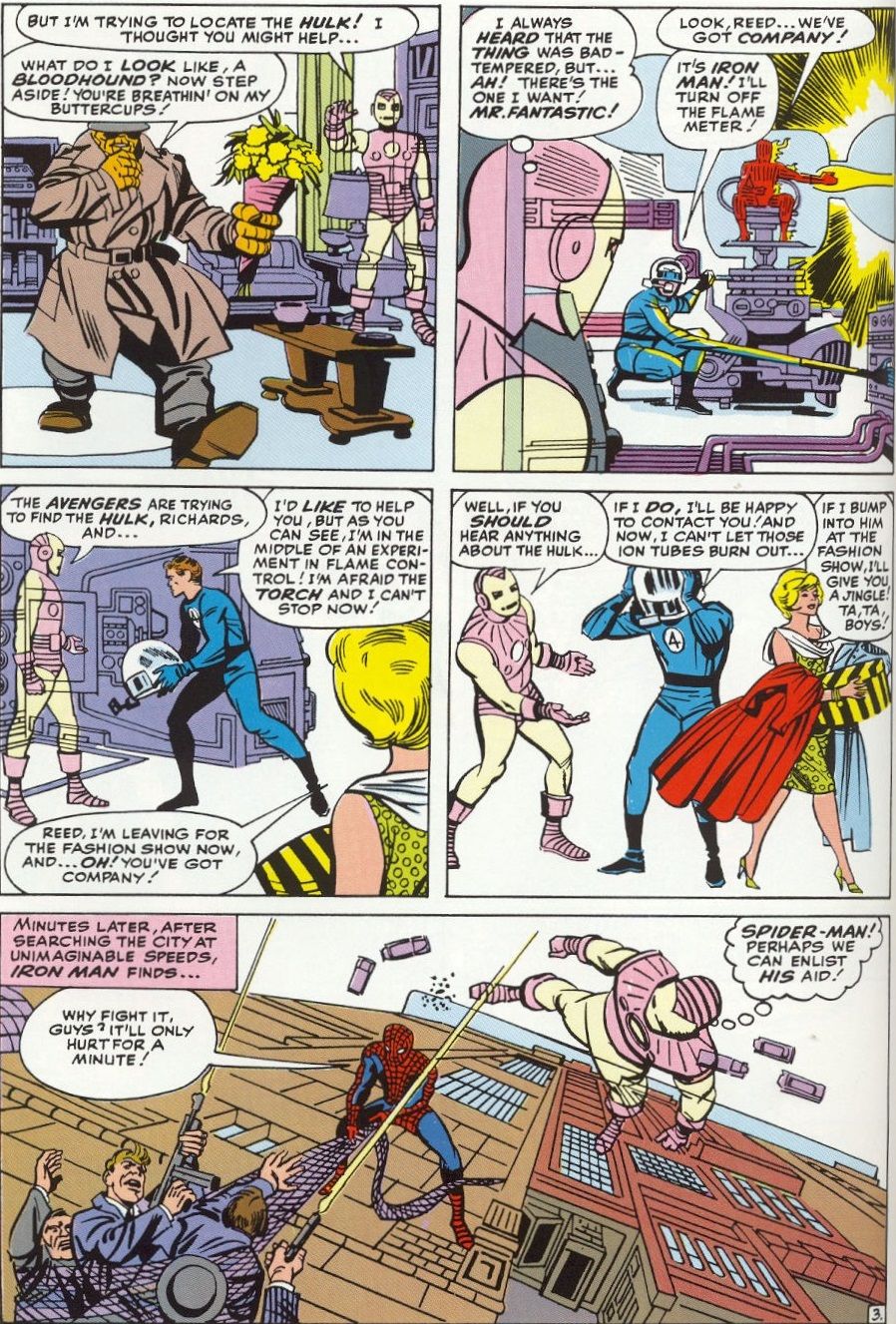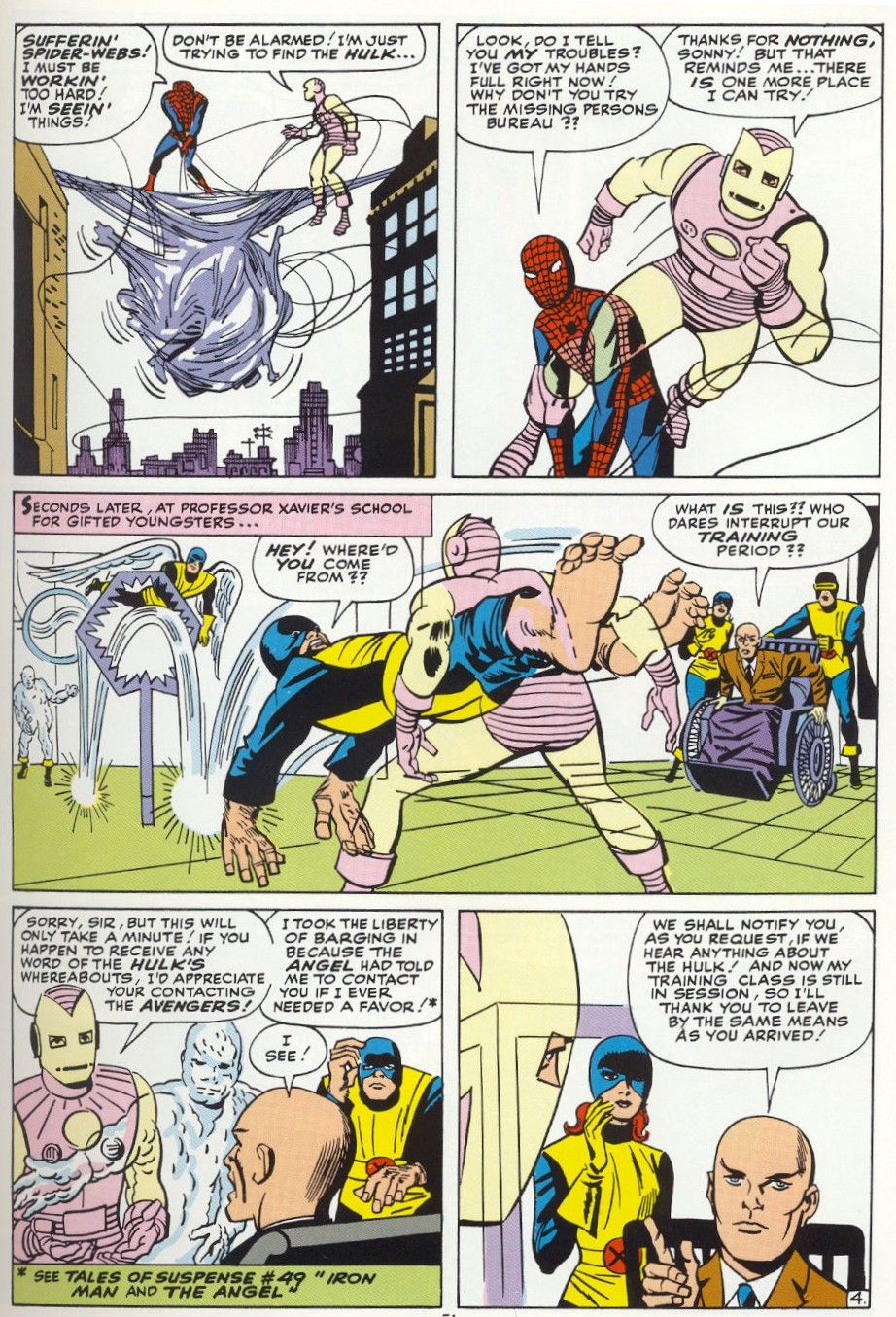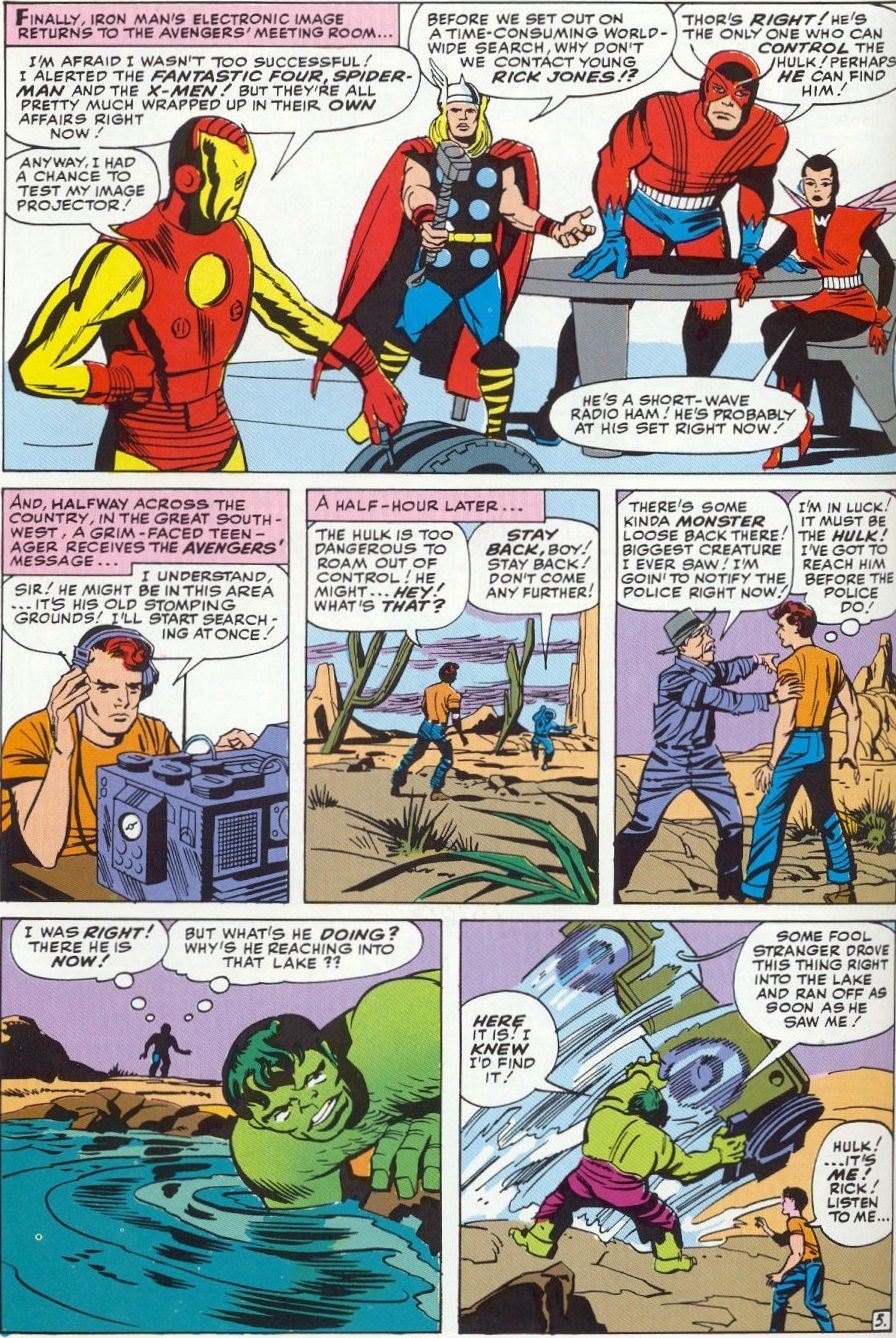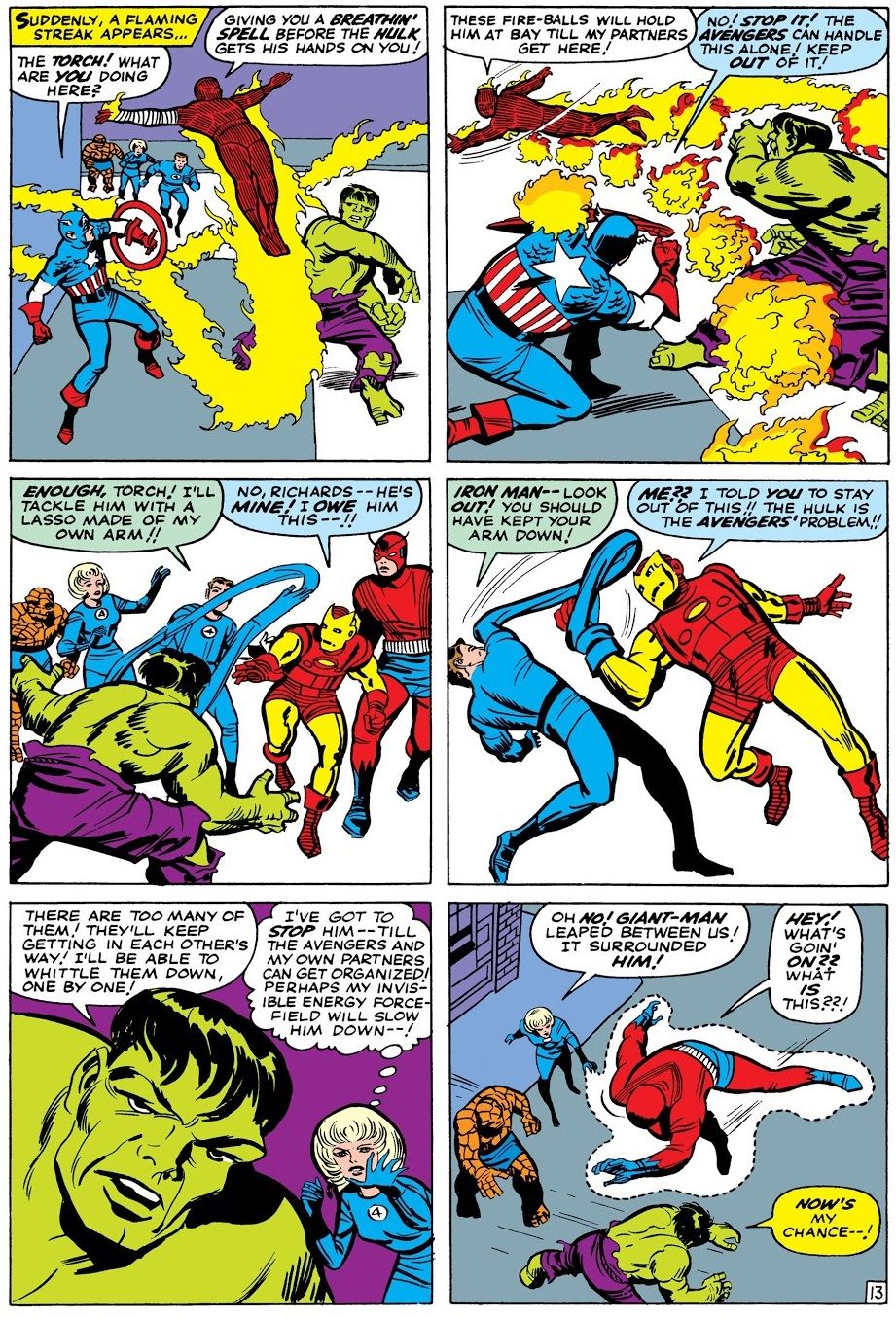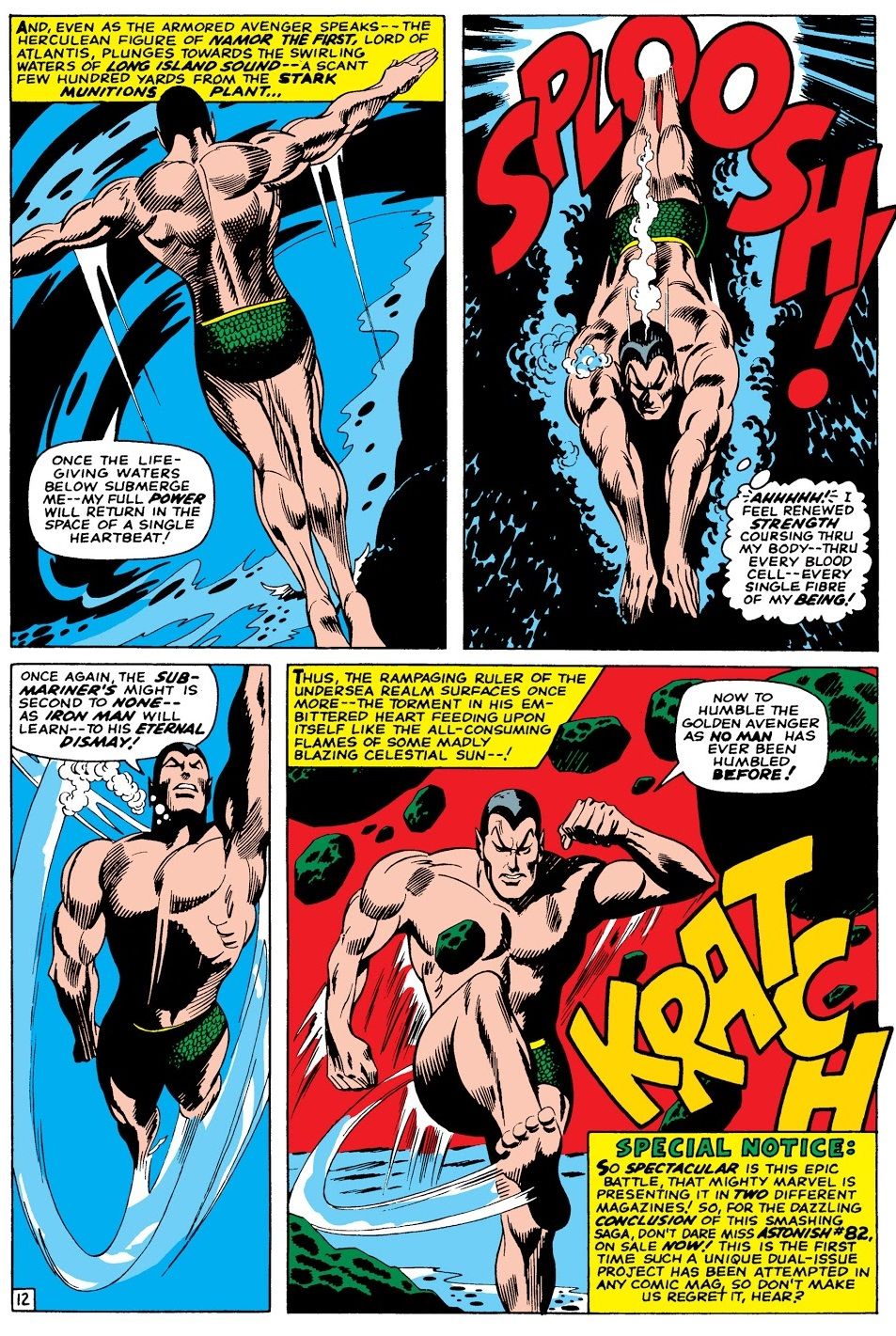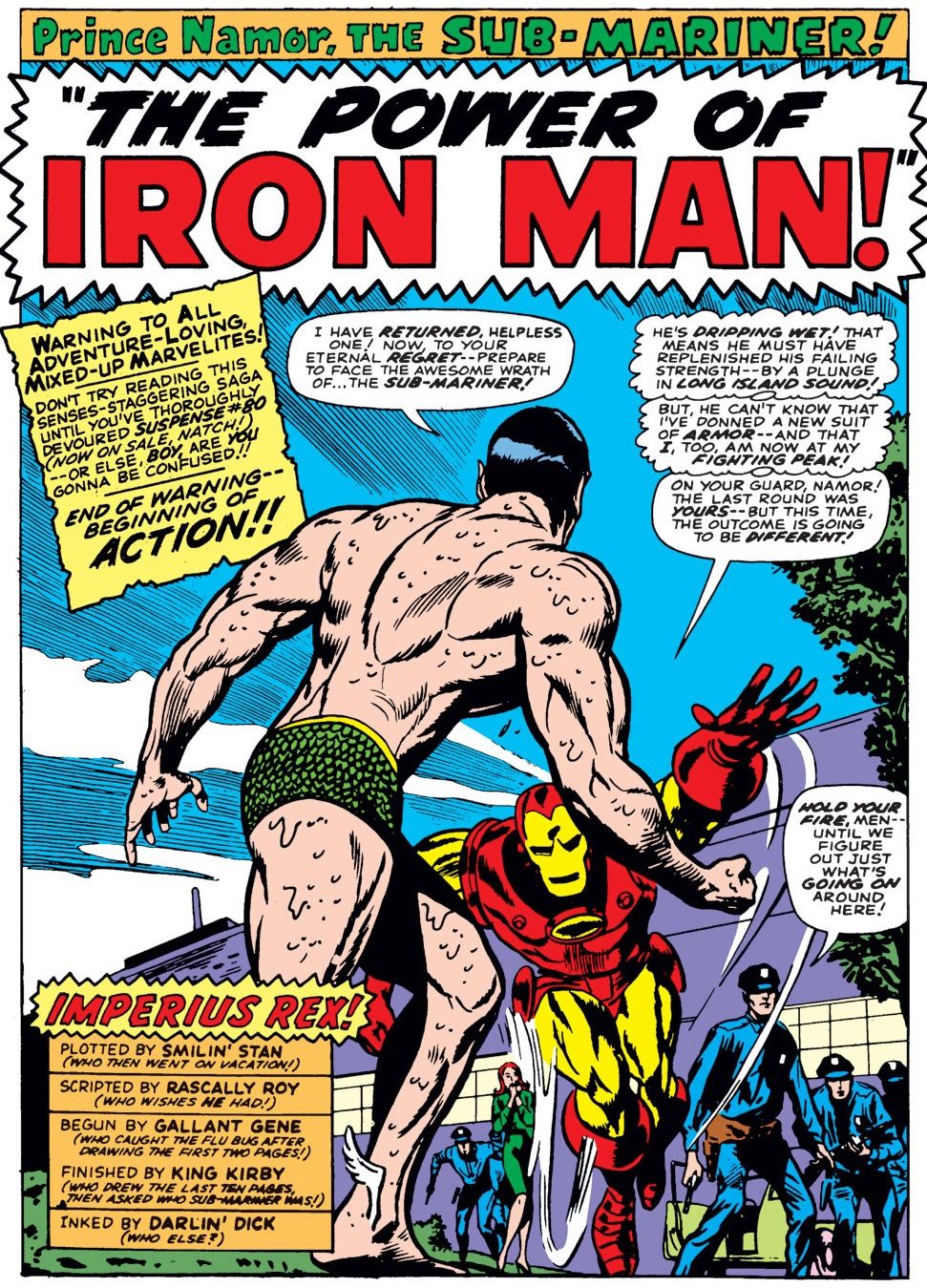I will continue to celebrate Stan Lee's legacy in comic books (and more) with this series, The Life and Times of Stan Lee.
Today, the Marvel Cinematic Universe is likely the most successful example of an interconnected universe of stories, with an upcoming Avengers film poised to use the entire 11-year history of the MCU to its advantage next year. However, the very notion of an interconnected film universe wouldn't be possible if it were not for the success of the interconnected Marvel Comics Universe, something that was created in the 1960s through the efforts of Stan Lee, Jack Kirby, Steve Ditko and many other Marvel artists of the era.
RELATED: How Stan Lee Helped Bring Humanity to Superheroes
In early 1940, MLJ Comics released Pep Comics #4 (by Harry Shorten and Irv Novick), which ended by telling readers to go read Top Notch Comics #5, where the villains that the Shield faced off against in Pep Comics would also take on the Wizard...
And sure enough, in Top Notch Comics #5 (by Will Harr and Edd Ashe), the Wizard and the Shield meet each other...
That, right there, was the first time that superheroes from the same comic book company shared a story together. This was soon followed by friends Carl Burgos and Bill Everett having their Human Torch and Namor characters fight against each other in Marvel Mystery Comics #9 before they ultimately teamed up.
National Comics then upped the ante with All-Star Comics #3 in late 1940 that took a number of characters from National Comics' various titles (mostly the ones put out by Max Gaines' All-American Comics, which was a subsidiary of National Comics that actually briefly split from National for a little bit before Gaines decided to get out of superhero comics and sold his superhero titles to National so that he could pursue what he believed would be his big money-maker, Picture Stores From the Bible) and introduced a framing sequence to the series (that was initially an anthology featuring solo stories of different superheroes) that suggested that the heroes were all part of a big superhero team known as the Justice Society of America.
So the idea of a shared superhero universe was something that existed long before Stan Lee and Jack Kirby created the Fantastic Four in 1961. However, what would soon be known as the Marvel Comics Universe was a much different animal than any of these other comic book universes and it would soon change the way people read comic books forever.
Page 2: [valnet-url-page page=2 paginated=0 text='The Marvel Universe begins...']
After finding a great deal of sales success from the launch of Fantastic Four, Marvel decided to slowly but surely launch more superhero features in its horror and science fiction anthologies, like Tales of Suspense (which launched Iron Man), Journey Into Mystery (which launched Thor), Tales to Astonish (which launched Ant-Man) and Amazing Adult Fantasy (which launched Spider-Man under an altered name of simply Amazing Fantasy). The Hulk actually debuted in his own short-lived ongoing series. Spider-Man soon got his own solo ongoing series, as well.
On December 10th, 1962, two very important comic books came out for Marvel that represented the stat of the burgeoning Marvel Universe.
RELATED: How Stan Lee Fought To Keep Spider-Man An 'Everyman'
Amazing Spider-Man #1 launched Spider-Man's new series by having the hero face off against the Fantastic Four...
Meanwhile, Fantastic Four celebrated its first anniversary by facing off against the Hulk...
The Fantastic Four's letter column, by the way, included a note at the bottom saying, "IMPORTANT NOTE: The FANTASTIC FOUR make a guest appearance in the new AMAZING SPIDER-MAN comics, # 1, on sale December 10th. DON'T MISS IT!" Obviously, having popular comic book characters show up in the first issue of a new title is inherently a way to advertise the new character. Similarly, having a character appear in a successful comic book series is also a way to get readers to check out that character's solo titles.
Those two issues were the first examples of inter-title crossovers of the new Marvel Universe. However, as we established earlier, that alone was not that interesting by 1962. After all, the entire reason why Marvel created the Fantastic Four in the first place is because of the success of DC Comics' Justice League of America, which consisted of superheroes from seven different comic book series coming together as part of a single superhero team.
No, what made the Marvel Universe special is what followed.
In Amazing Spider-Man #3, the Human Torch is giving a demonstration and it ends up inspiring Spider-Man to try again after he suffered a terrible defeat at the hands of Doctor Octopus...
Four issues after the Fantastic Four encountered the Hulk, they also teamed up with Ant-Man...
When Marvel formed its own version of the Justice League in Avengers #1, it was not before Rick Jones sent out a message for help in stopping the Hulk that reached the Fantastic Four, as well...
Iron Man had a traditional superhero fight/team-up with the Angel in Tales of Suspense #49...
Then, in Avengers #3, we got what would be the perfect example of what the Marvel Universe was slowly becoming. Iron Man and the Avengers are trying to find the Hulk after their short-lived teammate quit the team the previous issue. So Iron Man sends an image projection throughout the Marvel Universe, checking in with the Fantastic Four, Spider-Man and the X-Men...
None of those other heroes end up teaming up with the Avengers in the issue. They guest-starred just to show the readers the other superheroes in the Marvel Universe. The whole point of these small cameos was to build up the idea that these characters all existed in a shared universe. They didn't have to have full-fledged team-ups, they could just co-exist in a world.
However, they also did team-up enough together that there was soon this sense that you weren't getting the full adventure unless you were buying all of Marvel's comic books. Like when the Avengers and the Fantastic Four all teamed up together to fight the Hulk in Fantastic Four #26. If you were either an Avengers fan or a Hulk fan, how could you pass that up?
Stan Lee perpetuated this notion with the letter columns of Fantastic Four and Amazing Spider-Man, which continually hyped up the other comic book titles. This practice continued with the introduction of Marvel's Bullpen Bulletins, which would appear in all of their comic books, promoting all of the books out that given month.
The next big step was in 1966, when Marvel released their first inter-company crossover where you had to purchase both comic books for the story to make any sense.
In Tales of Suspense #80 (by Stan Lee, Gene Colan and Jack Abel), Iron Man has spent the whole issue avoiding an angry Namor while dealing with a damaged armor. At the end of the issue, Iron Man is back in business and he is ready to take Namor on head-to-head...
The story then continued into Tales to Astonish #82 (by Lee, Roy Thomas, Jack Kirby, Gene Colan and Dick Ayers) for a major clash between the two comic book titans...
With the precedent now set, Marvel would do numerous crossovers from that point forward, but the Marvel Universe had already been created by that point, and it was something that other comic book companies have been trying to capture themselves ever since.
I'm sure you all have a lot of things that you'd like to see me cover regarding Stan Lee, so if you have any ideas, drop me a line at brianc@cbr.com

